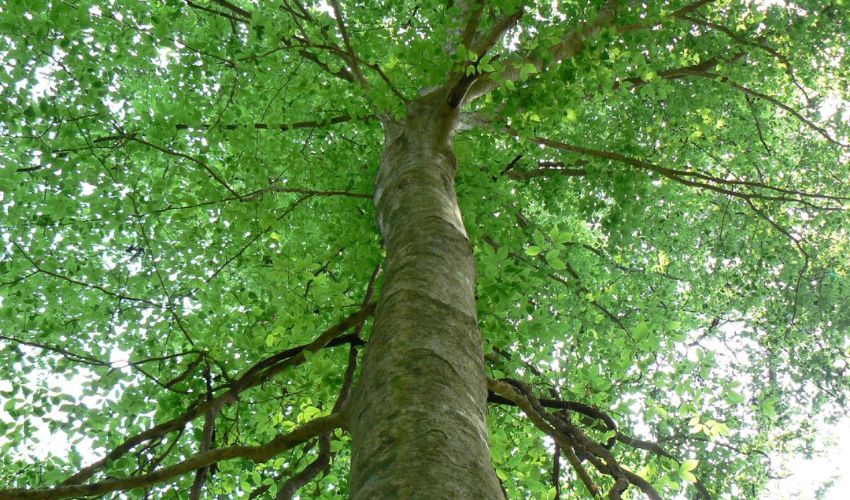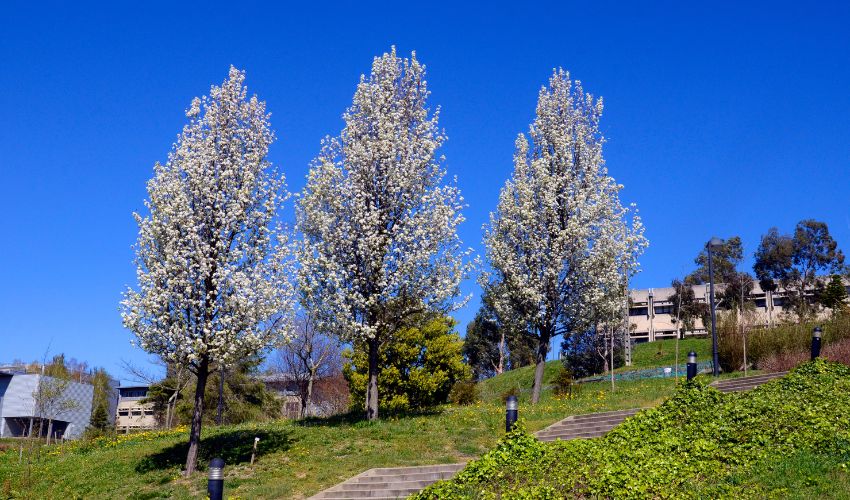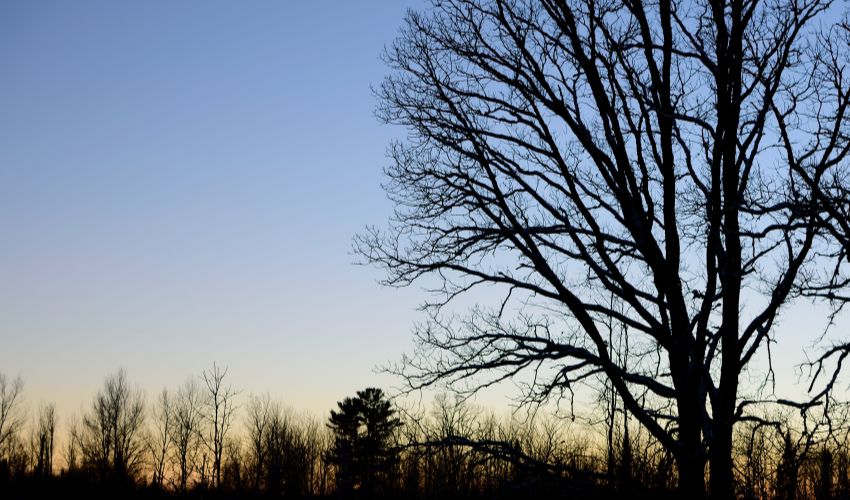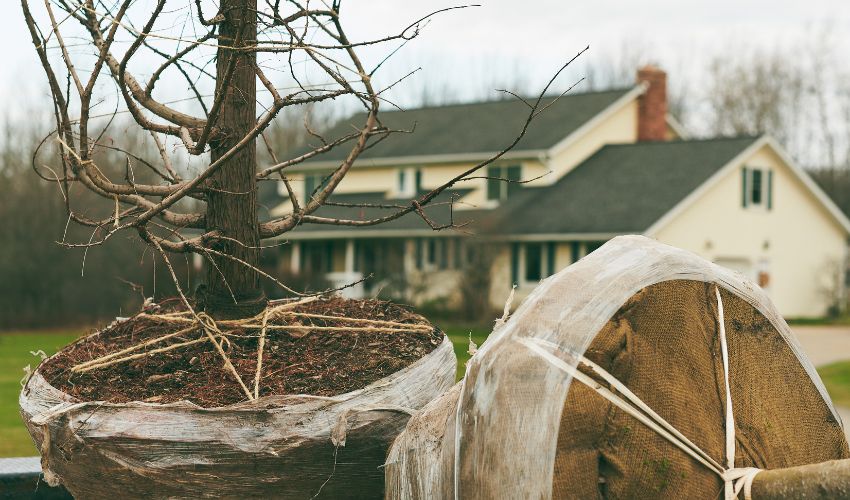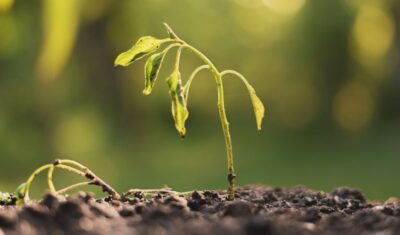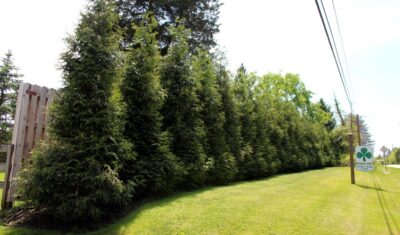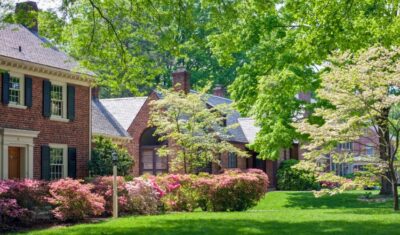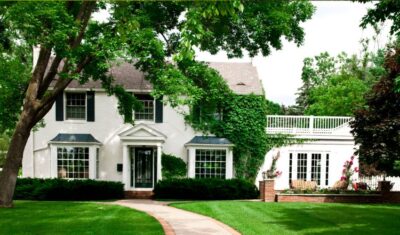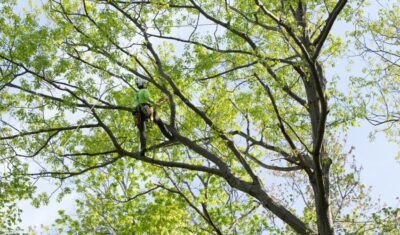There are around 100 trees native to Ohio, but when compared to the thousands of types of trees found around the world, even as many as 100 trees may seem limiting when choosing what to plant.
Why, then, is it important to plant native trees on your Ohio property?
This article will review some of the benefits of native trees. You'll learn more about what is considered a "native" tree and how native trees are vital for you, your property, and the local ecosystem.
What is Considered a Native Tree?
A native tree is a tree that has been naturally found in our area for centuries. In the United States, any tree or plant found here before European settlement is considered native to the U.S. Growing a native tree in Northeast Ohio means a tree that has always been found in our specific area.
While adding an exotic or unusual tree to your Ohio property can be tempting, you can do more harm than good.
While native trees benefit our local wildlife, are adapted to our climate, and are easier to maintain, non-native trees often are the opposite.
Did you know that April is Ohio Native Plant Month?
Here’s a local article talking about 10 native trees you can plant on your property >>
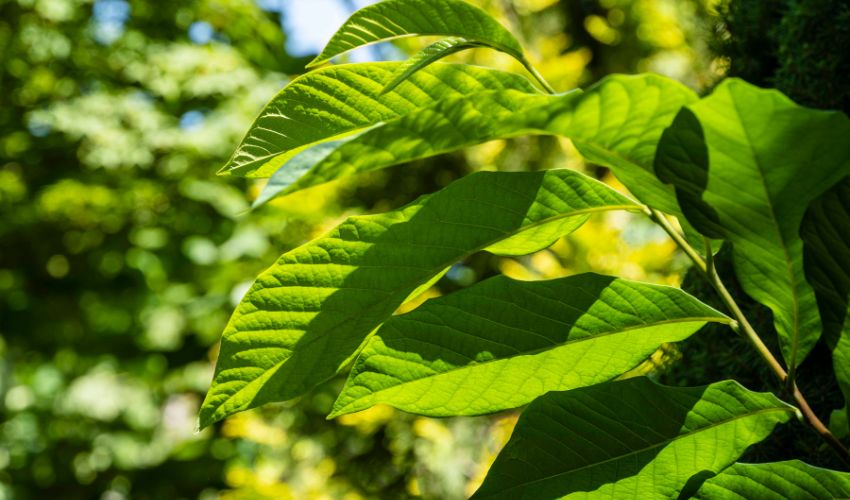
The pawpaw tree is the only fruit tree native to Ohio.
Native Trees of Northeastern Ohio
Many trees are native to Northeast Ohio and the surrounding areas. These trees will grow best in our region, support local wildlife, and require less care and maintenance than non-native trees once established.
Examples of some of our native trees include:
- Eastern White Pine (Pinus strubus)
- Bur Oak (Quercus macrocarpa)
- Sugar Maple (Acer saccharum)
- Pawpaw (Asimina triloba)
- American Beech (Fagus grandifolia)
- Yellow Birch (Betula alleghaniensis)
See the Trees of Ohio Field Guide to learn more about over 60 trees native to Ohio >>
We have several lists of recommended trees to plant in our area. In most cases, we recommend native trees when possible.
Native Trees and Plants for Winter Landscapes >>
Best Trees for Small Spaces in Northeast Ohio >>
Best Northeast Ohio Trees for Colorful Fall Foliage >>
Best Spring-Flowering Trees to Plant in Northeast Ohio >>
Problems With Non-Native Trees
Non-native trees were sometimes brought to our area in an effort to solve a problem. Callery pear trees, native to Asia, were considered the ideal street tree with beautiful spring flowers. However, those flowers have an unpleasant smell, the trees have brittle wood that easily breaks, and the trees grow much larger than anticipated. As of January 1, 2023, selling, growing, or planting Callery pear trees in Ohio is illegal.
Other non-native trees were brought here to grow crops or for other well-intended purposes. Still others were accidentally introduced when the seeds hitchhiked on cargo being transported from far locales.
Trees not native to Northeast Ohio are still sold here in big box stores and nurseries. However, there are several reasons not to choose a tree or plant that can't naturally be found in our area.
Non-Native Trees Require More Care
A tree that is not native to our area will either struggle to survive in our climate or will adapt so well that it will become invasive.
While native trees know how to survive in our climate, they also work with native animals and insects. Non-native trees, however, grow best in their own environment.
Non-native trees will often require:
- more water than native trees
- a different soil type than found here
- more plant health care services to ward of pests and diseases than native trees
- more fertilization than native trees
- more maintenance than native trees
Because these trees are adapting to a new environment, this can cost you, the property owner, more money.
Non-Native Trees Become Invasive Quickly
Some non-native trees planted here have grown so well that they are starting to replace our native plants and trees. These invasive trees can block the sunlight from trees that need the sun to photosynthesize, can steal water and nutrients from the soil thanks to their far-reaching and quickly spread root systems, or can outgrow the spaces in which they were meant to be, becoming a nuisance to control or remove.
Trees that are not native to Ohio exist here without the predators or animals that normally use them as a food source. This allows the non-native trees to spread unchecked, their growth and spread not deterred by outside forces.
Invasive non-native trees harm the overall ecosystem, reduce plant biodiversity, and provide fewer food and shelter options for many animals.
According to the Ohio Invasive Plants Council, “Approximately 50,000 non-native plant and animal species have been introduced to the United States. At least half that number are plants, which can cause more than $34 billion a year in damage to the environment, forestry, agriculture, industry, recreation, and human health.”
Invasive trees in Northeast Ohio include:
- European Common Buckthorn
- Siberian Elm
- Callery or Bradford Pear
- Autumn-olive
- Russian-olive
- Tree-of-heaven
Invasive trees should never be planted in our area and should be removed, if possible.
See a complete list of invasive plants in Ohio >>
Benefits of Native Trees in Northeastern Ohio
Unlike trees introduced from other locales, native trees have grown in Northeast Ohio for generations. They know how to survive in this soil, with our rainfall, and with the help of our local wildlife. Many require less maintenance than non-native trees, although most trees in urban and suburban settings need a little extra care thanks to the lack of nutrients in the soil and the sub-optimal growing conditions.
Native trees are beautiful and will enhance your landscape, benefit our local wildlife, and are better adapted to survive in the future.
Native Trees Benefit Local Wildlife
Trees don't exist on their own. They work together to benefit the natural world around them and rely on insects and wildlife.
For instance, many birds rely on native trees for shelter, food, and nesting spots. By contrast, some native flowering trees rely on local pollinators for pollination.
Some native bees rely on only one tree, plant, or flower species as a pollen source. The lack of food sources for native bees may be one reason for the decline of many bee populations.
When local insects lose trees they rely on, local birds lose food for their young. Audubon points out, “…native oak trees support over 500 species of caterpillars whereas ginkgos, a commonly planted landscape tree from Asia, host only 5 species of caterpillars. When it takes over 6,000 caterpillars to raise one brood of chickadees, that is a significant difference.”
Pollinators are one category of wildlife at risk due to the lack of native trees, plants, and flowers.
Native Trees Are Better Adapted to Survive Changes
While introduced trees and plants can become easily stressed by a change in temperature, humidity, weather patterns, or other environmental shifts, native trees are more easily able to adapt to (and survive) new conditions.
As Ohio’s water sources become increasingly polluted, native trees are needed as they can help by absorbing pollutants and excess nutrients. The roots also assist in preventing soil erosion.
How To Find and Choose Native Trees for Your Northeast Ohio Property
We’ve included many resources and links in this article to help you identify native Ohio trees and non-native trees. When planning to plant a tree on your property, use them as a guide.
Check out our article on choosing the right tree (and planting location!) on our website.
The experts at Independent Tree are here to assist you! We can help you choose the most suitable trees for your location, plant or transplant the trees, and ensure that your young trees thrive.
Learn more about Independent Tree’s tree planting and transplanting services >>
We also have tree health services such as fertilization and soil improvement to give your trees the best growth conditions.
We hope this article has shown you the importance of our native trees, inspired you to add more native trees and plants to your property, and informed you of some of the pitfalls of non-native trees.
Want More Native Trees on Your Property?
Contact Independent Tree to schedule a property inspection or ask us about our tree planting services. We can help you decide what native trees would work best on your property.Recent Articles
Topics
About The Author

STAY IN THE LOOP
WITH OUR
LATEST UPDATES
"*" indicates required fields

